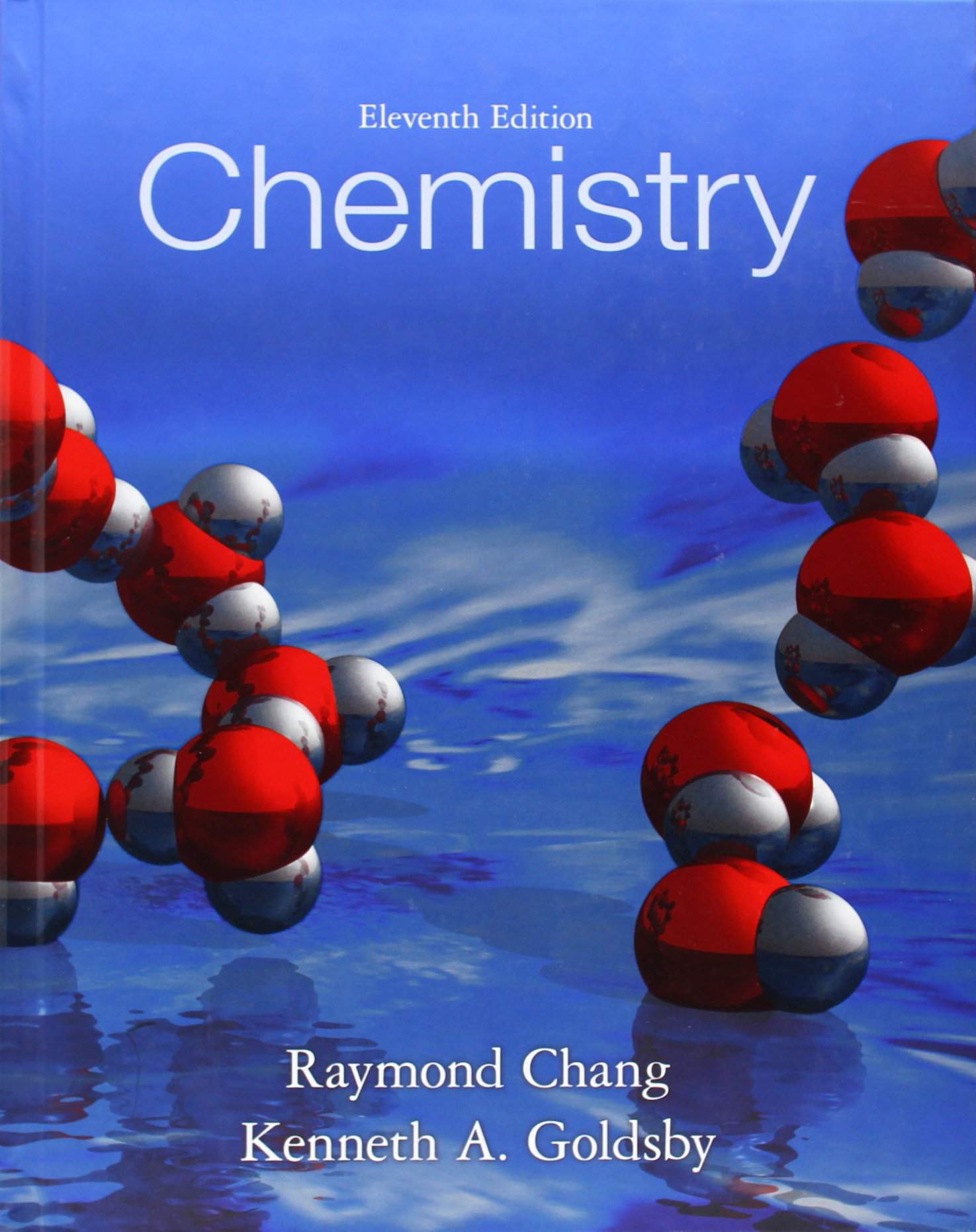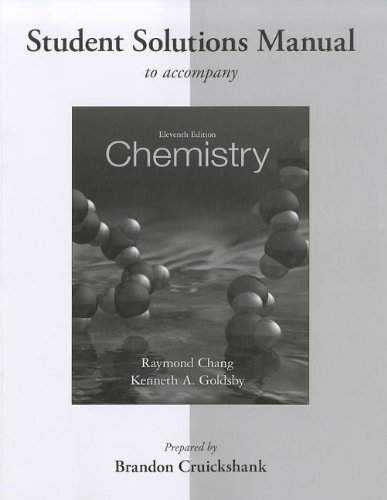

Professor Goldwhite
Practical Batteries, Electrolysis
Slide Duration:Table of Contents
47m 38s
- Intro0:00
- What is Chemistry?0:07
- Experimental Science0:48
- Changes in Matter1:18
- Energy and its Redistribution2:20
- Central Science2:45
- Properties of Matter7:10
- Physical7:45
- Example: Physical Properties7:58
- Chemical9:02
- Example: Chemical Properties9:18
- Physical Changes (Reversible)11:19
- Melting11:39
- Boiling (Evaporation and Condensation)13:21
- Dissolving (Solution)15:41
- Chemical Changes18:04
- Example: Balanced Chemical Equation18:37
- Compositions of Matter23:15
- Heterogeneous Mixture23:27
- Example: Milk23:40
- Example: Dirt25:07
- Homogenous Mixture25:40
- Example: Air, Gas, Vinegar26:20
- Solutions vs Pure Substances27:06
- Compounds and Elements29:13
- Additional Example 1-1
- Additional Example 2-2
1h 2m 38s
- Intro0:00
- Dalton's Atomic Theory0:05
- Law of Multiple Proportions3:10
- Current Atomic Theory5:59
- Components: Electrons, Protons, Neutrons6:51
- Isotopes8:04
- Complex Molecules9:35
- Fundamental Definition of an Element11:27
- Nuclear Charge (Z)11:35
- Atomic Number12:37
- Isotopes13:37
- Atomic Masses15:53
- Hydrogen, Carbon, Chlorine16:33
- Measurement22:35
- SI Units23:50
- Basic Units26:39
- Meter, Kilogram, Second, Kelvin, Liter26:52
- Multiplier Prefixes33:05
- Measure Quantity40:50
- Number x Unit41:05
- Example: Height, Volume41:16
- Additional Example 1-1
- Additional Example 2-2
22m 20s
- Intro0:00
- JJ Thompson and the Electron1:11
- Cathode Ray Tube1:19
- Electron Prediction3:31
- Millikan, Charge of Electron3:57
- Proton4:45
- Rutherford and the Nucleus5:42
- Alpha Particles6:06
- Nucleus8:05
- Chadwick and the Neutron12:35
- Neutron13:27
- Constitutions of Atoms17:05
- Example: Hydrogen Isotopes17:09
- Example: Iodine 12720:08
51m 6s
- Intro0:00
- Significant Figures: Sphere0:14
- Example: Cube7:11
- Example: Weight10:40
- The Mole13:36
- Examples: Number of Entities14:00
- Avogadro's Number15:10
- Carbon 1216:16
- Mass of 1 Mol17:49
- Molar Mass of Oxygen20:01
- Stoichiometry25:15
- Example: Molar Masses26:25
- Molar Mass26:39
- Example: Cholesterol27:08
- Example: Insulin38:38
- Additional Example 1-1
- Additional Example 2-2
58m 17s
- Intro0:00
- Balancing Chemical Equations0:49
- Atoms and Charges1:50
- Example: Mercury and Oxygen2:45
- Example: Combustion of a Hydrocarbon6:19
- Redox: Oxidation and Reduction12:30
- Example: Sodium and Chlorine23:55
- Electron Transfer19:34
- Limiting Reagent22:25
- Example: Nuts and Bolts22:45
- Example: Mercury and Oxygen27:24
- Reaction Formulas32:03
- Example: Iron Oxide and Carbon32:11
- Example: Benzene and Chlorine38:28
- Theoretical Yields, Actual Yields42:13
- Percentage Yield42:53
- Example43:08
- Theoretical Yield from Limiting Reagent45:11
- Example: Benzene and Chlorine45:35
- Additional Example 1-1
- Additional Example 2-2
1h 1m 11s
- Intro0:00
- Empirical Formula0:45
- Molecular Formula1:22
- Percentage by Mass1:40
- Elements in Compounds1:48
- Example: Water2:44
- Example: Copper Sulfate7:29
- Empirical Formula13:02
- Example: Hydrocarbons13:37
- Calculating Empirical Formula20:24
- Example: C, H, O20:32
- Molar Mass and Molecular Formulas27:54
- Determining Molar Mass32:21
- Mass Spectrometry32:38
- Gas Laws36:28
- Colligative Properties39:18
- Empirical and Molecular Formulas39:30
- Example: Ethylene and Chlorine39:32
- Additional Example 1-1
- Additional Example 2-2
42m 43s
- Intro0:00
- Combustion Reactions0:39
- Example: Balancing2:33
- Exchange Reactions7:58
- Example: Silver Nitrate + Sodium Chloride9:11
- Precipitate10:56
- Example: Sulfuric Acid + Sodium Chloride13:20
- Naming Ions With Oxygen16:10
- Example: Benzene and Chlorine17:26
- Acid Base Reactions18:50
- Recognizing Acids19:18
- Recognizing Bases23:48
- Litmus Test26:02
- Common Acids26:31
- Common Bases28:40
- Redox Reactions34:13
- Example: Potassium + Fluorine35:54
- Example: Sodium + Oxygen39:11
1h 3m 47s
- Intro0:00
- Forms of Energy1:30
- Potential Energy and Kinetic Energy1:32
- Example: Potential2:53
- Example: Kinetic4:07
- Units of Energy5:20
- Example: Kinetic Energy, Joules6:40
- Calorie8:02
- Conservation of Energy11:41
- First Law of Thermodynamics12:22
- Heat Capacity and Measurement17:10
- Heat Capacity17:38
- Calorimeter19:04
- Examples: Elements and Compounds20:37
- Enthalpy25:40
- Enthalpy Changes in Physical/Chemical Processes31:25
- Exothermic32:09
- Endothermic34:16
- Example: Water36:09
- Reversing a Process38:21
- Example: Hydrogen + Oxygen39:06
- Hess's Law42:38
- Example: Hydrogen + Oxygen43:46
- Enthalpy of Formation47:05
- Example: Hydrogen + Oxygen49:53
- Enthalpy of Formation: Carbon Disulfide51:13
- Additional Example 1-1
1h 3m 35s
- Intro0:00
- Waves and Their Characteristics0:32
- Amplitude, Trough, Crest1:01
- Wavelength1:40
- Frequency2:11
- Velocity (Speed of Light)2:58
- Electromagnetic Radiation5:10
- Gamma Rays and X-Rays5:43
- Visible Light6:19
- Infrared6:54
- Radio Waves7:16
- Spectra and Spectroscopy7:58
- Hydrogen Atom Spectrum10:13
- Emission Spectrum vs Absorption Spectrum14:13
- Rydberg Formula14:51
- Planck's Quantum Theory16:55
- Black Body Radiation and Quanta17:30
- Photoelectric Effect23:29
- Bohr's Theory of the Hydrogen Atom28:20
- Ground State29:17
- Excited State29:26
- Heisenberg and the Uncertainty Principle34:48
- De Broglie and the Wave Nature of Particles40:07
- Principle Quantum Number44:05
- First Quantum Number45:46
- m1 Quantum Number51:00
- Spin Quantum Number54:28
- Pauli Principle54:58
- Additional Example 1-1
1h 13m 12s
- Intro0:00
- Periodic Law of Mendeleev and Meyer0:43
- Modern Periodic Table5:09
- Atomic Number5:51
- Noble Gases6:46
- Halogens7:06
- Group Number7:16
- Metals8:07
- Groups and Periods8:30
- Transition Metals9:18
- Lanthanides10:23
- Actinides11:26
- Quantum Numbers and the Shape of the Table12:06
- Electron Configuration of Atoms17:59
- Electron Configuration of Neutral Atoms19:49
- Example: Elements20:23
- Example: Noble Gases25:26
- Electron Configuration of Monatomic Ions28:40
- Example: Elements29:42
- Atomic Size37:59
- Larger as Down a Group38:44
- Smaller as Across a Period39:34
- Sizes of Monatomic Ions42:05
- Example: Elements43:15
- Noble Gas Electron Configurations45:52
- Example: Elements46:10
- Electron Affinity50:20
- Ionization Energy52:32
- Example: First Ionization Energy52:43
- Periodic Table Trend53:37
- Example: Boron54:22
- Ionic Compounds (NaCl)57:00
- Ionic Bond (Electrostatic)57:57
- Additional Example 1-1
- Additional Example 2-2
1h 17m 27s
- Intro0:00
- Covalent Bond1:05
- Hydrogen Atom1:38
- Lewis2:41
- Sharing of Electrons3:14
- Valence Electrons4:13
- Example: Lewis Symbols5:35
- Lewis Structures of Atoms and Ions10:05
- Example: Ions10:56
- Octet Rule13:34
- Noble Gases14:14
- How to Draw Lewis Structures17:35
- Single Bond21:39
- Double Bond21:54
- Triple Bond22:02
- Examples: Compounds22:23
- Formal Charges32:44
- Example: 3 Structures of FCN34:01
- Exceptions to the Octet Rule40:17
- Fewer Than 8 Electrons41:07
- Example: Boron (Electron Deficiency)41:53
- More Than 8 Electrons44:22
- Example: Compounds45:37
- Electronegativity48:09
- Example: Values49:24
- Ionic or Polar Covalent Bond52:02
- Molecular Orbitals54:16
- Sigma and Pi Bonding55:56
- Additional Example 1-1
- Additional Example 2-2
1h 11m 19s
- Intro0:00
- VSEPR: Valence Shell Electron Pair Repulsion0:53
- Counting Electron Sets4:20
- Example: Methane4:48
- Example: Ammonia5:48
- Example: Formaldehyde7:06
- Example: Hydrogen Cyanide8:48
- Geometry of 2 and 3 Sets10:28
- Two Sets: Linear11:30
- Examples11:57
- Three Sets: Trigonal and Planar14:29
- Examples15:48
- Geometry of 4 Sets19:46
- Four Sets: Tetrahedral20:08
- Examples22:03
- Geometry of 5 and 6 Sets27:50
- Five Sets: Trigonal Bipyramid28:12
- Six Sets: Octahedron30:28
- Hybridization and Hybrid Orbitals32:07
- Linus Pauling33:27
- Example: Carbon33:46
- Orbital Phases40:14
- Wave Function Phases40:20
- Example: 2p Orbital41:09
- Sigma Bonds42:51
- Example: Ethane46:37
- Pi Bonds49:04
- Example: Ethylene50:15
- Additional Example 1-1
- Additional Example 2-2
1h 1m 12s
- Intro0:00
- States of Matter: Solid, Liquid, Gas0:43
- Solid1:10
- Liquid2:14
- Gas3:10
- Phase Transitions4:36
- Melting, Freezing, Boiling, Condensing5:09
- Sublimation, Condensation6:49
- Example: Dry Ice7:25
- Ionic Forces and Ion Dipole Forces8:42
- Example: Ionic Forces11:04
- Example: Ion Dipole Forces (Polar)12:44
- Dipole-Dipole Forces and Hydrogen Bonding15:51
- Example: Water Molecules16:06
- Example: Liquid Hydrogen Chloride16:46
- Strong Dipole-Dipole, Hydrogen Bonds17:43
- Boiling Points19:30
- Dispersion or London Forces22:36
- Boiling Points of Noble Gases26:39
- Hydrogen Bonding in Water and Biological Systems28:17
- Example: Crystalline Water (Open Structure)28:28
- Example: Protein29:34
- Example: DNA Double Helix30:31
- Gaseous State: Kinetic Molecular Model31:00
- Gases of the Atmosphere33:31
- Percentage by Volume33:59
- Pressure33:15
- Mercury Barometer36:14
- Units of Pressure38:33
- Pascal39:23
- Bar, Torr, Atm39:49
- Gas Laws and the Ideal Gas Law41:47
- Boyle's Law42:01
- Charles' Law42:45
- Ideal Gas Law (Combined Law)43:25
- Gas Constant R44:11
- Example: Gas Law Calculations45:02
- Molar Mass from Gas Law Calculations47:21
- Example: Experimental Gas48:21
- Additional Example 1-1
- Additional Example 2-2
1h 1m 12s
- Intro0:00
- Partial Pressure and Mole Fraction1:08
- Example: Gases A, B, C3:00
- Example: Mole Fraction of A, B, C4:28
- Dalton's Law of Partial Pressures6:29
- Example: Gases A, B, C8:14
- Example: Air11:27
- Applications of Dalton's Law12:23
- Example: Potassium Chlorate12:39
- Real Gases20:16
- Example: Hydrogen and Nitrogen21:05
- Departure from Ideal Gas Law23:42
- Van der Waals' Equation28:52
- Corrective Equation31:18
- Ozone and the Ozone Hole34:01
- How Ozone is Formed35:56
- Effects of Chlorofluorocarbons (CFC)40:49
- Example: Freon52:59
- Oxides of Nitrogen47:15
- Sulfur Dioxide51:32
- Acid Rain54:19
- Additional Example 1-1
56m 58s
- Intro0:00
- Vapor Pressure: An Equilibrium Phenomenon0:55
- Thought Experiment: Water Equilibrium1:06
- Boiling Point and Normal Boiling Point6:19
- Reducing Boiling Point3:10
- Example: Water9:51
- Surface Tension14:12
- Example: Water15:55
- Viscosity19:53
- Intermolecular Forces22:22
- Example: Ethanol, Antifreeze, Glycerol22:52
- Enthalpies of Phase Changes28:08
- Example: Water28:22
- Phase Diagrams (Water)32:22
- Vapor Pressure Curve35:30
- Melting Point Line35:54
- Triple Point36:36
- Critical Point37:50
- Phase Diagrams (Carbon Dioxide)38:42
- Sublimation40:11
- Critical Point42:56
- Triple Point and Critical Point44:54
- Example: Carbon Dioxide46:11
57m 30s
- Intro0:00
- Solids: Crystalline and Amorphous0:59
- X-Ray Diffraction4:30
- Types of Crystalline Solids: Atomic5:39
- Example: Metallic Copper5:50
- Types of Crystalline Solids: Ionic Crystal7:20
- Example: NaCl7:37
- Types of Crystalline Solids: Molecular Crystal11:30
- Example: Ice11:42
- Types of Crystalline Solids: Network Solid13:22
- Example: Carbon Allotropes (Diamond and Graphite)13:36
- X-Ray Diffraction and Bragg's Law18:26
- Bragg's Law Equation23:53
- Unit Cell26:55
- Simple Cubic Unit Cell27:47
- Face-Centered and Body-Centered Unit Cells31:06
- Body-Centered Cubic31:22
- Face-Centered Cubic32:53
- Unit Cell and Densities of Crystalline Solids36:13
- Example: Platinum36:39
- First Law of Thermodynamics and Lattice Energy42:14
- Example: NaCl42:33
- Lattice Energies and Constitutions of Ionic Solids47:33
- Additional Example 1-1
52m 34s
- Intro0:00
- Diamond and Graphite0:55
- Diamond1:32
- Graphite3:25
- C-60: An Unexpected Allotrope6:59
- Buckyball (R. Buckminster Fuller)9:30
- Carbon Nanotubes11:42
- Possible Uses13:51
- Metals, Semiconductors, and Insulators15:34
- 3 Classes of Conductors15:41
- Conductivity and Band Theory20:30
- Example: Valence Band22:46
- P-Type and N-Type Semiconductors27:21
- Phosphorus to Silicon29:21
- Boron to Silicon31:38
- P/N Junctions33:48
- Integrated Circuit38:49
- Glasses and Ceramics40:26
- Glasses41:02
- Example: Common Window Glass44:49
- Ceramics47:16
1h 5m 40s
- Intro0:00
- Types of Solutions1:43
- Examples: Homogeneous Mixtures2:37
- Examples: Solid Solutions6:59
- Saturation Solubility8:47
- Example: Solvent and Soluten (Salt and Water)9:15
- Solubility Dependencies14:54
- Henry's Law15:36
- Values for Henry's Law Constant (Water)18:01
- Example: Soda Can19:27
- Example: SCUBA21:10
- Solution Concentration Expressions26:02
- Percentage by Mass26:16
- Example: Salt and Water26:52
- Molarity28:18
- Molality31:26
- Calculation of Solution Concentrations32:42
- Example: Sodium Chloride Solution32:49
- Dilution of Solutions37:35
- Example: Hydrochloric Acid38:54
- Effects of Temperature on Solubility (Gases in Liquids)42:01
- Example: Water42:40
- Effects of Temperature on Solubility (Solids in Liquids)45:42
- Examples: Various Salts46:47
- Entropy: Qualitative Introduction52:25
- Temperature Effects: Enthalpy, Entropy55:39
- Additional Example 1-1
1h 10m 42s
- Intro0:00
- Colligative Properties and Raoult's Law0:43
- Colligative (Collective)0:46
- Raoult's Law1:55
- Uses of Raoult's Law (Mole Fraction and Molar Mass)4:34
- Boiling Point Elevation, Freezing Point Depression5:47
- Pure Water and Solution in Water6:17
- Lower Vapor Pressure6:53
- Higher Boiling Point (Elevation)7:04
- Lower Freezing Point (Depression)7:52
- Example: Antifreeze8:37
- Change in Boiling Point (Molality)10:55
- Molar Mass from Elevation and Depression12:49
- Example: Water and Cystine13:20
- Van der Waals' Alpha Factor18:59
- Alpha Factor Equation20:15
- Example: Salt Ions21:11
- Osmosis23:02
- Blood (Isotonic, Hypertonic, Hypotonic)23:47
- Osmotic Pressure27:40
- Osmotic Pressure Definition (Pi)30:14
- Van der Waals'30:57
- Molar Mass from Osmotic Pressure33:29
- Example: Peptide in Water34:20
- Colloids and the Tyndall Effect38:33
- Light Beam (Solution and Colloidal Suspension)41:05
- Surfactants44:11
- Example: Sodium Stearate (Soap)45:10
- Soaps and Detergents49:24
- Ordinary Soaps Problem52:36
- Synthetic Soaps53:57
- Additional Example 1-1
- Additional Example 2-2
1h 8m 48s
- Intro0:00
- Reaction Rate1:30
- Chemical Reaction Rate2:36
- Example: Methyl Bromide and Sodium Hydroxide4:04
- Reaction Rates: Changing Concentrations10:28
- Example: Double Initial Concentrations11:33
- Order of Reaction17:05
- Experimental Rate Law17:47
- Overall Rate21:27
- Initial Rate Measurement23:24
- Example: Methyl Bromide and Sodium Hydroxide23:44
- Integrated Rate Laws: First Order Reaction29:54
- Integrated Rate Equation31:12
- Example: Transitional Metal Complex33:48
- Integrated Rate Laws: Second Order Reaction38:12
- Integrated Rate Equation38:37
- Experimental Rate Laws39:41
- Example: Transitional Metal Complex39:55
- Experimental Rate Laws, cont.42:45
- Example: Nitramide43:00
- Reaction Mechanism46:12
- Hypothetical Aspect47:38
- Predict Outcomes48:02
- Elementary Reactions and Reaction Mechanisms49:43
- Example: Methyl Bromide and Hydroxide Ion51:02
- Rate Limiting Step54:47
- Example: Rate Limiting Step55:41
- Additional Example 1-1
- Additional Example 2-2
1h 2m 56s
- Intro0:00
- Effects of Temperature on Reaction Rates1:05
- Common Examples4:30
- Arrhenius' Equation6:40
- Activation Energy9:09
- Example: Nitrogen Pentoxide11:52
- Reaction Rate Theory15:20
- Activated Complex and Transition State17:05
- Example: Methyl Bromide and Hydroxide Ion19:58
- Calculating Activation Energy22:32
- Plotting ln K and Inverse T23:38
- Catalysis in Practice25:33
- Example: Catalytic Converter26:43
- Example: Oil Refinery29:30
- Acid Catalysis of Ehtyl Acetate Hydrolysis31:48
- Example32:03
- Industrial Production of Ammonia35:54
- Haber Bosch Process36:06
- Industrial Production of Sulfuric Acid41:02
- Series of Processes41:38
- Enzymes as Catalysts45:59
- Example: Amino Acid47:04
- Example: Protein47:18
- Additional Example 1-1
1h 10m 47s
- Intro0:00
- Equilibrium in Physical Processes1:13
- Example: Water Equilibrium (Vapor Pressure)1:30
- Example: Water Equilibrium (Melting )1:58
- Equilibrium in Chemical Processes3:37
- Example: Acetic Acid and Ethanol3:51
- The Equilibrium Law and Equilibrium Constant9:11
- Equilibrium Law11:32
- Equilibrium Constant K12:47
- Equilibrium Expressions and Constants14:11
- Example: Acetic Acid and Ethanol14:24
- Example: Calcium Carbonate (Lime Burning)17:23
- Standard Concentration and Activities21:13
- Kp and Kr23:56
- Example: Nitric Oxide24:26
- Calculations of Equilibria29:06
- Example: Acetic Acid and Ethanol29:17
- Le Chatelier's Principle40:47
- Stressors42:55
- Example: Haber Bosch49:26
- Additional Example 1-1
- Additional Example 2-2
1h 41s
- Intro0:00
- Acids0:36
- React with Some Metals2:25
- Litmus Test (Red)3:04
- Bases4:33
- Litmus Test (Blue)5:52
- Acids and Base Neutralize6:43
- Classification: Arrhenius and Bronsted-Lowry8:52
- Arrhenius Classification9:11
- Example: HCl (Hydronium) and NaOH (Hydroxide)11:08
- Bronsted-Lowry Classification12:42
- Example: HCl13:30
- Conjugate Acid, Conjugate Base14:08
- Lewis Acids and Bases16:23
- Lewis Base: Electron Pair Donor17:24
- Lewis Acid: Electron Pair Acceptor18:24
- Example: Lewis Acid Base Reaction20:03
- Common Strong Acids22:02
- Common Strong Bases24:39
- Common Weak Acids26:24
- Common Weak Bases31:14
- Water as an Acid and Base: Kw34:01
- K of Water35:21
- Ionization Constants for Weak Acids38:11
- Examples: Constants38:20
- Ionization Constants for Weak Bases40:30
- Examples: Constants40:44
- pH and the pH Scale43:12
- Sorenson pH43:46
- Neutral Water44:48
- Acid and Base pH46:24
- pH Scale (Acid and Alkaline)47:30
- Additional Example 1-1
1h 9s
- Intro0:00
- pH in a Solution of a Weak Acid0:45
- Vinegar (Acetic Acid)1:00
- Example: pH of Acetic Acid Solution2:34
- pH in a Solution of a Weak Base9:42
- Ammonia9:48
- Example: pH of Pyridine Solution11:46
- Salts of Weak Acids with Strong Bases17:15
- Example: Acetic Acid and Sodium Hydroxide17:55
- Salts of Weak Bases with Strong Acids20:55
- Example: Ammonia and Hydrochloric Acid21:13
- Conjugate Acid Base Pairs: Ka and Kb22:58
- Example: Acetic Acid Ionization23:06
- Polyprotic Acids: Successive Ka Values28:50
- Example: Diprotic Acid (Sulfuric Acid)29:13
- Example: Tripotic Acid (Phosphoric Acid)29:28
- pH in a Polyprotic Acid Solution41:02
- Example: Phosphoric Acid Solution pH41:21
- Salts of Polyprotic Acids47:32
- Examples: TSP, Tartaric Acid47:45
- Additional Example 1-1
1h 6m 19s
- Intro0:00
- Titration and Analysis0:43
- Equipment: Burets, Pipet, Stopcock, Volumetric Flask1:38
- Molarity4:04
- Strong Acid-Strong Base Titration6:16
- Example: Sodium Hydroxide and Hydrochloric Acid7:04
- Weak Acid-Strong Base Titration16:45
- Example: Acetic Acid and Sodium Hydroxide17:06
- pH Meter28:48
- pH Electrode: Logarithmic Change to Hydronium29:19
- Indicators32:10
- Example: Indicator and Hydronium33:21
- Phenolphthalein34:07
- Methyl Orange35:12
- Theory and Choice of Indicators39:19
- Indicator Visibility if Factor of 1040:45
- Buffers42:47
- What is a Buffer Solution?46:08
- Acetate Buffer and Ammonium Buffer47:16
- Example: Buffer Effects48:26
- Buffer Regions in Titrations51:38
- Example: Acetic Acid and Sodium Hydroxide51:48
- Practical Buffers55:17
- Example: Acetic Acid and Acetate Ion (pH Range)55:27
- Additional Example 1-1
59m 36s
- Intro0:00
- Equilibrium in Saturated Salt Solution1:12
- Example: Silver Chloride1:50
- Ksp (Solubility Product Constant)4:12
- Solubility Product Constant6:19
- Example : Lead Iodide6:31
- Limitations of the Solubility Product9:06
- Low Solubility9:23
- Complexes that are Soluble11:31
- Ksp Values and Ion Concentrations13:28
- Example: Silver Chloride16:06
- Example: Lead Chloride19:22
- Precipitation of Salts23:56
- Example: Silver Bromide and Copper Bromide25:31
- Common Ion Effect31:52
- Example: Lead Sulfate32:11
- Le Chatelier's Principle39:30
- Common Ion Solubility42:37
- Example: Lead Chloride in Sodium Chloride Solution42:46
- Acids, Bases, and Solubility Equilibria48:32
- Example: Lead Carbonate48:46
- Lle Chatelier's Principle54:26
- Group Separation and Qualitative Analysis of Metal Ions55:09
- Examples56:25
- Additional Example 1-1
53m 51s
- Intro0:00
- Factors Affecting Equilibrium Constants1:15
- Spontaneous Reaction2:17
- Temperature Effects4:50
- State Functions: Enthalpy and Entropy6:17
- Example: Methane and Chlorine8:32
- Hess's Law10:36
- Entropy10:55
- Statistical Interpretation of Entropy13:24
- Boltzmann Entropy Equation13:33
- Reversible Change16:24
- Example: Water and Ice16:55
- Third Law of Thermodynamics20:06
- Nernst20:31
- Entropies of Gases, Liquids, and Solids23:16
- Example: Entropy Values25:17
- Entropy Values from Enthalpy/Temperature28:55
- Example: Water (Graph)29:34
- Entropy Changes in Phase Changes32:33
- Melting (Fusion)32:41
- Example: Water Melting33:15
- Second Law of Thermodynamics34:21
- Example: Hydrogen and Oxygen37:20
- Statement of Second Law (Spontaneous/Reversible)39:28
- Reactant Favored and Product Favored Equilibria41:10
- Reactant or Product Favored41:48
- Converse45:15
- Limitations of Applying the Second Law to Equilibria46:57
- Delta S47:30
1h 1m 10s
- Intro0:00
- The Gibbs' Function0:35
- Values of Delta G4:57
- The Gibbs' Function and K9:11
- Gibbs' Function Change (Free Energy)11:06
- Values of Gibbs' Function Standard Change14:17
- Calculation of K from ThermoDynamic Data15:46
- Example: Nitrogen Dioxide to Dinitrogen Tetroxide16:01
- Calculation of K24:32
- Example: Diamond to Graphite24:46
- Calculation of K31:33
- Example: Ammonia31:38
- Temperature Changes: Gibbs' Function and K38:12
- Estimating Gibbs' Function Values at Temperatures40:04
- Temperature Changes42:29
- Example: Oxide of Iron and Carbon42:49
- Additional Example 1-1
1h 7m 26s
- Intro0:00
- Oxidation and Reduction Review0:58
- Example: Sodium and Chlorine1:05
- Determining Oxidation Numbers5:43
- Rules for Assigning Oxidation Numbers8:02
- Oxidation Number Assignment11:25
- Examples: Various11:42
- Balancing Half Reactions18:26
- Example: Half Reactions21:22
- Example: Zinc in Hydrochloric Acid22:34
- Combining Half Reactions Into Complete Reactions24:32
- Example: Zinc24:40
- Spectator Ions26:10
- Half Reactions in Acidic and Basic Solutions28:38
- Example: Permanganate29:18
- Balancing Redox Reactions36:34
- Example: Determination of Iron37:22
- Balancing Redox Reactions45:54
- Example: Lead Dioxide and Chloride Ion46:12
- Additional Example 1-1
- Additional Example 2-2
1h 7m 52s
- Intro0:00
- Electricity from Chemical Reactions0:29
- Galvani Volta: Current Electricity0:40
- Voltaic Pile (Battery)3:33
- Potato Clock4:35
- Daniell Cell5:56
- Oxidation of Zinc, Reduction of Copper6:46
- Spontaneous Overall Reaction8:25
- Anode and Cathode9:20
- Current Electricity Fundamentals11:34
- Electric Charge: Coulomb11:46
- Electric Current: Ampere12:33
- Volt14:43
- Ohm's Law16:16
- Galvanic Cell17:41
- Salt Bridge19:35
- Cell Potential and Work20:56
- Joules21:40
- Coulombs22:27
- Hydrogen Electrode22:53
- Breakdown24:12
- Half-Cell Potentials29:24
- Example: Zinc and Standard Hydrogen Electrode (SHE)30:50
- Electrochemical Series35:04
- Example: Aluminum Reducing Iron Ion38:26
- Nernst Equation41:46
- Faraday42:09
- Example: Concentration Cell (Copper Ions)46:39
- Nernst Equation: pH Meter52:24
- Example: Potential and pH53:21
- Nernst Equation: Ion Concentrations56:11
- Additional Example 1-1
- Additional Example 2-2
1h 2m 6s
- Intro0:00
- Primary Batteries0:54
- Leclanche Dry Cell1:03
- Alkaline Cell4:34
- Fuel Cell6:53
- Overall Reaction8:24
- Secondary Batteries13:47
- Car Battery14:04
- Electrolysis18:41
- Aluminum Plant19:14
- Chromium Plating22:42
- Sodium Chloride24:08
- Example: Metallic Na24:20
- Example: Bleach28:38
- Faraday's Laws32:22
- Example: Aluminum Electrolysis34:54
- Corrosion of Iron41:24
- Example: Iron Galvanic Cell44:34
- Protection of Iron Against Corrosion46:55
- Coating of Tin Cans47:18
- Additional Example 1-1
40m 35s
- Intro0:00
- Radioactivity Pioneers0:36
- Becquerel2:20
- Curie1:53
- Rutherford2:38
- Soddy2:55
- Alpha, Beta, and Gamma Radiation3:46
- Three Types of Emission4:28
- Transmutation and Nuclear Equations7:01
- Decay of Uranium8:07
- Balancing Nuclear Equations13:08
- Example: Chromium13:19
- Example: Radium15:56
- Synthesis of New Isotopes and Elements18:47
- Example: Nitrogen and Alpha Particles19:44
- Example: Uranium and Carbon Nuclei21:41
- Mass Changes in Nuclear Transformations23:55
- Mass and Energy Equivalence (e=mc2, Einstein)24:39
- Mass-Energy Transformations28:35
- Example: Uranium28:38
- Stability of Nuclei and Binding Energy33:11
- Nucleons33:34
- Example: Deuterium and Helium33:51
- Curve of Binding Energy; Fission and Fusion35:53
56m 12s
- Intro0:00
- First Order Nuclear Decay0:41
- Example: Uranium2:01
- Rate Constant3:42
- Integrated Rate Equation3:52
- Half-Life5:14
- Half-Lives and Rate Constants6:09
- Examples: Various6:14
- Radioactive Dating: Rocks9:18
- Example: Rock with Uranium and Lead10:53
- Radioactive Dating: Carbon-1417:27
- Example: Shroud of Turin20:54
- Example: Wooden Staff22:31
- Nuclear Fusion in Stars27:22
- Example: Reaction in Sun29:21
- Nuclear Weapons32:24
- Example: Uranium Isotope34:14
- Nuclear Power38:52
- Nuclear Power Usage42:30
- Nuclear Wastes and Their Disposal45:03
- Additional Example 1-1
1h 8m 32s
- Intro0:00
- Saturated Hydrocarbons C-1 to C-41:41
- Acyclic2:38
- Example: Methane, Ethane, Propane3:28
- Isomers7:19
- Acyclic Saturated Hydrocarbons C-5 Isomers10:27
- Example: Pentanes10:40
- Alkenes and Ring Compounds14:56
- Alkenes15:34
- Example: Ethene, Ethylene16:25
- Example: Propene Isomers19:19
- Geometric Isomers of Alkenes24:13
- Example: 2-Butene24:34
- Trans and Cis26:27
- Optical Isomers28:45
- Example: Carbon Atom33:49
- Functional Groups: Alcohols and Caboxylic Acids39:11
- Alcohols39:27
- Carboxylic Acids41:41
- Functional Groups: Esters and Ethers44:10
- Esters (Ethyl Acetate)44:27
- Ethers (Diethylether)46:14
- Functional Groups: Aldehydes and Ketones47:48
- Examples47:59
- Amines51:01
- Amide Group54:24
- Peptides and Proteins56:02
- Additional Example 1-1
50m 13s
- Intro0:00
- Global Climate Change1:41
- Greenhouse Gases3:49
- Greenhouse Gases and Climate Change6:53
- Last 100 Years9:11
- Water Pollution: Eutrophication12:59
- Example: Fertilizers15:41
- Water Pollution: Organic Pollutants9:15
- Chlorinated Hydrocarbons (DDT)19:30
- Dioxins and Phthalates20:58
- Water Pollution: Heavy Metal Pollutants23:58
- Examples: Lead, Chromium, Arsenic24:17
- Radiation in the Environment24:35
- Thresholds39:20
For more information, please see full course syllabus of Chemistry
Chemistry Practical Batteries, Electrolysis
In this lecture you will learn about Practical Batteries and Electrolysis. First you will look at Primary Batteries such as the Leclanche Dry Cell and the more common Alkaline Cell. Then, you will shift into the Overall Reaction of the Fuel Cell before looking at Secondary Batteries such as the Car Battery. With Electrolysis, you discover the inner workings of an Aluminum Plant and Chromium Plating. Next you look at common Sodium Chloride before finishing off with Faraday's Laws, Corrosion of Iron, and Protection of Iron Against Corrosion with Tin.
Share this knowledge with your friends!
Copy & Paste this embed code into your website’s HTML
Please ensure that your website editor is in text mode when you paste the code.(In Wordpress, the mode button is on the top right corner.)
- - Allow users to view the embedded video in full-size.










































 Answer Engine
Answer Engine




0 answers
Post by Maimouna Louche on July 31, 2012
I love batteries. Thanks for the lesson!